Q&A: The Growing Role of Pharmacists in Medication Abortion
Pharmacists are increasingly helping expand access to medication abortion by dispensing mifepristone and providing patient guidance, especially in underserved areas.
Pharmacists are increasingly involved in medication abortion care. Once limited to clinics and hospitals, mifepristone can now be dispensed by certified pharmacists, which is helping to expand access. By providing the medication and counseling patients, pharmacists help reduce delays and barriers to care early in pregnancy. Although some state restrictions remain, pharmacists are now recognized as essential providers, offering safe, timely access to abortion care for those with limited healthcare options.
Drug Topics recently sat down with Nicole Cieri-Hutcherson, PharmD, BCPS, MSCP, FCCP, clinical associate professor at University at Buffalo, to discuss how the role of the pharmacist has evolved in the provision of medication abortion over the past decade and how pharmacist involvement in medication abortion can improve equity in reproductive healthcare access.
READ MORE:
Drug Topics: How has the role of pharmacists evolved in the provision of medication abortion over the past decade?
Nicole Cieri-Hutcherson, PharmD, BCPS, MSCP, FCCP: This has been an evolving thing over probably the last 2 to 3 decades. I'll just start with a little bit of a timeline. Medication abortion itself really started in 2000 with mifepristone’s initial approval. The regimen of mifepristone plus misoprostol and then post treatment care, this whole process has been federally regulated after its initial FDA approval. In 2005, mifepristone had a labeling change, which added some information about risks of infection, sepsis and bleeding to the warning section. Then in 2011, this is when we start to see a little bit more, not restriction necessarily, but control over provision of mifepristone and prescribing of mifepristone. That's when they added the elements to assure the safe use into a REMS program, which is a safety program for monitoring. In these additions in 2011, mifepristone must be ordered, prescribed, and dispensed under the supervision of a health care provider. The providers have to complete a prescriber agreement form, and at that time, mifepristone could only be dispensed in clinics and medical offices and hospitals if it was prescribed under a certified health care provider. Then the providers have to sign a patient agreement form, and they must give copies of medication guide to the patient.
In 2016, mifepristone labeling changed a little bit that allowed more expanded use up to 70 days gestation, and then more additions to the REMS were made. They changed the prescriber agreement form and said that you no longer had to provide a medication guide and didn't have to report about non-fatal adverse events. Then in 2019, the addition of the REMS for manufacturers was put into the REMS program. Most recently, in 2023, mifepristone REMS changed again, and this is where it kind of involves pharmacy a little bit more. Prior to this, it had to be prescribed in one of the clinics that I mentioned, and not necessarily dispensed in the pharmacy setting. In 2023, the REMS changed so that mifepristone can be prescribed by a certified health care provider, as long as they complete that provider agreement form, and then the patient and provider have to sign that the patient has received a medication guide, and it can either be dispensed by a certified prescriber or at this point by a certified pharmacy on from a prescription written by a certified prescriber.
Pharmacies complete a pharmacy agreement form in order to become certified, and then they can dispense it right in the pharmacy setting, which wasn't the case before. The role of the pharmacist was really limited until 2023 and for a little bit of time during the COVID-19 pandemic, when those rules were relaxed, in terms of dispensing mifepristone and counseling on the side effects and talking to patients about what to expect and providing them with the medication guide and following the steps in the REMS program.
Drug Topics: How might pharmacist involvement in medication abortion improve equity in reproductive health care access, particularly for rural or underserved populations?
Cieri-Hutcherson: Pharmacist dispensing of mifepristone would really help to remove geographic, and in some cases, financial obstacles that are significant, especially for patients in those rural areas. Almost a third of patients that are seeking abortion care have to travel more than 100 miles for care. Every day that goes by after the Dobbs decision in 2022, that distance and number increases. This is significantly higher than in patients in a non-rural area, so additional access points where patients might be able to receive abortion care earlier in pregnancy and reduce unintended pregnancy can help with that time that they might be spending in clinics or traveling to receive the abortion care.
Despite the REMS program being revised and implemented, state policies sometimes continue to restrict pharmacy dispensing of medication abortion and patient access. In those states where it's still allowed, these are just additional health care providers that can provide abortion care.
READ MORE:
Don’t get left behind: Sign up today for our
Newsletter
Pharmacy practice is always changing. Stay ahead of the curve with the Drug Topics newsletter and get the latest drug information, industry trends, and patient care tips.




































































































































